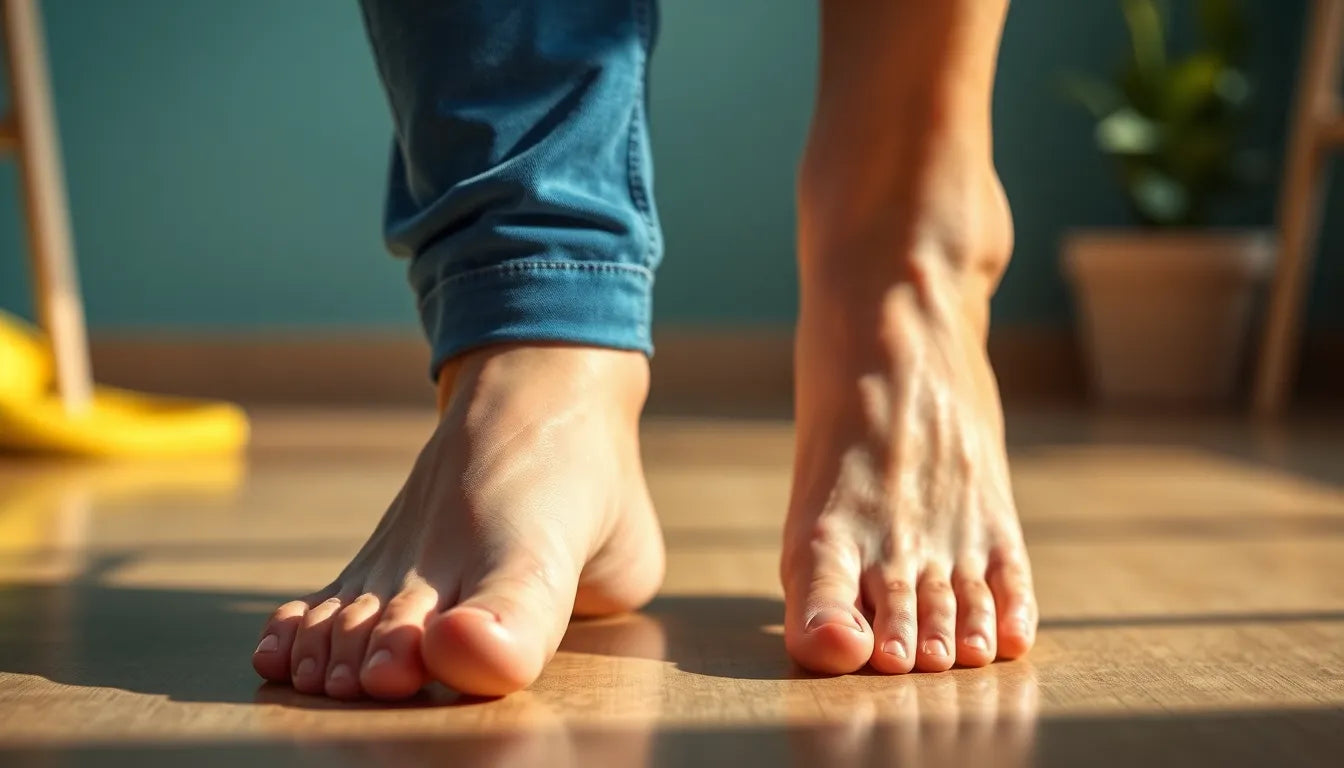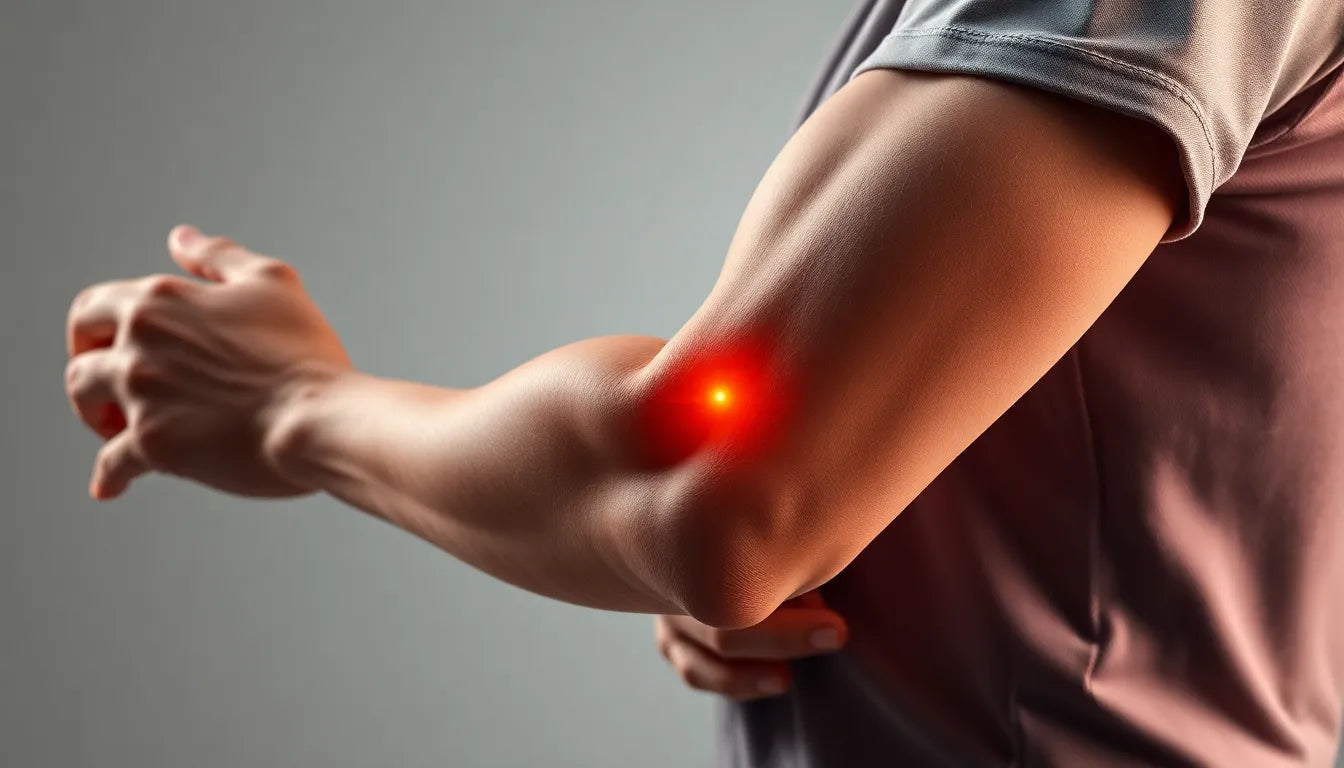Understanding the intricacies of heel spurs is essential for anyone experiencing discomfort in their feet. Often confused with plantar fasciitis, heel spurs are actually bony growths that form on the underside of the heel bone. This condition is distinct from plantar fasciitis, which involves inflammation of the plantar fascia, a thick band of tissue that runs across the bottom of your foot. While both conditions can cause heel pain, they require different approaches for treatment and management.
Prevalence and pain: who is affected by heel spurs?
Heel spurs are a common issue, particularly among individuals who spend a significant amount of time on their feet. This includes athletes, retail workers, and anyone whose daily activities involve prolonged standing or walking. The discomfort caused by heel spurs can range from mild to severe, often exacerbated by factors such as obesity, improper footwear, or repetitive stress on the feet. It's important to note that not everyone with heel spurs experiences pain; however, for those who do, it can significantly impact daily activities and quality of life.
Importance of exercises for heel spur relief
While heel spurs can be a persistent problem, incorporating specific exercises into your routine can play a crucial role in alleviating pain and preventing further complications. Targeted exercises help by stretching and strengthening the muscles and tissues around the heel, thereby reducing strain and promoting healing. Regular practice of these exercises can enhance flexibility, improve circulation, and provide much-needed relief from the discomfort associated with heel spurs.
In the following sections, we will explore a range of exercises specifically designed to address heel spur pain. These exercises not only aim to alleviate existing discomfort but also serve as preventive measures to minimize the risk of future issues. By understanding the benefits and techniques of these exercises, you can take proactive steps towards managing heel spur pain and improving your overall foot health.
anatomy and causes of heel spurs
To effectively address heel spurs, it's important to understand the anatomical structure of the foot and the underlying causes of this condition. The foot is a complex structure composed of bones, muscles, ligaments, and tendons, all working together to provide support and mobility. The heel bone, or calcaneus, is the largest bone in the foot and serves as the foundation for weight-bearing activities. Heel spurs develop as bony protrusions on the underside of the calcaneus, often resulting from repetitive stress and strain on the foot.
Common causes of heel spurs include prolonged pressure on the heel, which can occur due to activities such as running, jumping, or standing for extended periods. Improper footwear that lacks adequate arch support or cushioning can exacerbate this pressure, leading to the formation of spurs. Additionally, biomechanical issues such as flat feet or high arches can contribute to uneven weight distribution, increasing the likelihood of developing heel spurs. Understanding these factors is crucial for implementing effective preventive and therapeutic measures.
recommended exercises for heel spurs
calf stretch on a step
The calf stretch on a step is a simple yet effective exercise that targets the muscles in the calf and the plantar fascia. To perform this exercise, stand on a step with the balls of your feet on the edge and your heels hanging off. Slowly lower your heels below the level of the step until you feel a stretch in your calves and under your feet. Hold this position for 15-30 seconds before lifting your heels back up. Repeat the stretch three times. This exercise helps to reduce tension in the calf muscles and plantar fascia, providing relief from heel spur pain.
plantar fascia stretch
The plantar fascia stretch is designed to alleviate tension in the plantar fascia, a key factor in managing heel spur discomfort. To perform this stretch, sit down and cross one foot over the opposite knee. Grab the toes of the crossed foot and gently pull them back towards your shin. Hold the stretch for 10-15 seconds and repeat three times on each foot. This exercise can help improve flexibility and reduce pain associated with heel spurs.
toe towel curls
Toe towel curls are an excellent exercise for strengthening the intrinsic muscles of the foot, which can improve arch support and reduce strain on the heel. To perform this exercise, place a towel on the floor and use your toes to scrunch it towards you. Continue this motion for 2-3 minutes. Regular practice of toe towel curls can enhance the overall stability and function of the foot, contributing to the management of heel spur pain.
foot roll with a ball
The foot roll with a ball provides a soothing massage for the plantar fascia, helping to relieve tension and discomfort. Use a tennis ball or a specialized massage ball under your foot, rolling it back and forth from the heel to the toes. Perform this massage for 3-5 minutes per foot. This technique not only alleviates pain but also promotes circulation and relaxation of the foot muscles.
arch lifts
Arch lifts are a beneficial exercise for strengthening the intrinsic muscles of the foot, which play a crucial role in supporting the arch and alleviating heel spur pain. To perform arch lifts, stand with your feet shoulder-width apart. Lift the arches of your feet while keeping your toes and heels on the ground. Hold this position for 5 seconds and repeat the exercise 10 times. By incorporating arch lifts into your routine, you can enhance foot stability and reduce the risk of future heel spur issues.
By consistently practicing these exercises, individuals can experience significant relief from heel spur pain and improve their overall foot health. It's important to remember that while exercises can be highly effective, they are most beneficial when combined with other treatments such as proper footwear, orthotic inserts, and, in some cases, physiotherapy. In the next section, we'll explore how to integrate these exercises with additional treatment options for optimal results.

Lumbar support belt
Provides adjustable lower back support and helps relieve pain during everyday activities.
combining exercises with other treatments
While incorporating hælspore øvelse into your routine is crucial for alleviating heel spur pain, it's equally important to combine these exercises with other effective treatments. A holistic approach can significantly enhance your recovery and prevent future discomfort. One of the first steps is to ensure you are wearing proper footwear. Shoes with adequate arch support and cushioning can reduce stress on the heel, preventing the aggravation of heel spurs.
Orthotic inserts are another valuable addition to your treatment plan. These custom or over-the-counter inserts provide additional support and help distribute weight more evenly across your foot. This can alleviate pressure on the heel and reduce the risk of further spur growth. Consulting with a podiatrist can help you find the most suitable orthotics for your specific needs.
In some cases, physiotherapy may be beneficial, especially if your pain persists despite regular exercise and proper footwear. A physiotherapist can provide a tailored exercise program and manual therapy techniques to improve your foot biomechanics and alleviate pain. They can also guide you in modifying activities that may contribute to heel spur formation.
Beyond these treatments, lifestyle modifications can play a crucial role in managing heel spurs. Maintaining a healthy weight reduces the load on your feet, minimizing stress on the heel. Additionally, incorporating rest periods into your routine, especially if you spend long hours on your feet, can prevent overuse injuries.
By integrating these treatments with your hælspore øvelse routine, you can effectively manage heel spur pain and promote long-term foot health. Remember, consistency is key, and it's essential to listen to your body and adjust your routine as needed. If you experience increased pain or discomfort, seek advice from a healthcare professional to ensure you're on the right track.

Men's Posture Shirt™ - White
Patented shirt offers posture support and can help reduce pain and tension during activity.
frequently asked questions
can exercises alone cure heel spurs?
Exercises can significantly alleviate pain and improve foot function, but they are most effective when combined with other treatments like proper footwear and orthotic inserts.
how long before I see results from these exercises?
Consistent practice over several weeks can lead to noticeable improvements in pain and function. Individual results may vary, so patience and regularity are important.
are these exercises safe for everyone?
Generally, yes. However, individuals with severe pain or other foot conditions should consult a healthcare professional before starting any exercise regimen to ensure safety and effectiveness.
how often should I perform these exercises?
Aim for daily practice, especially in the beginning, to build strength and flexibility. Consistency is key to achieving the best results.
what should I do if the exercises increase my pain?
If you experience increased pain, discontinue the exercises and consult a healthcare provider. They can ensure you're performing them correctly and rule out other issues that may be contributing to your discomfort.


















